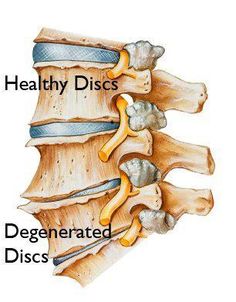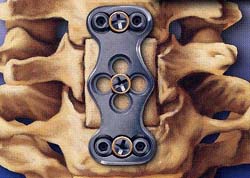Cervical Disc Degeneration is a medical condition that involves pain in the neck due to wear and tear of one or more cushioning discs in the vertebrae of the cervical spine. The gel-like substance between the discs acts as natural shock absorbers of our movements. After a time, the gel-like substance begins to wear off causing to narrow the space between the vertebrae and nerve roots, thus affecting the flexibility of your neck and arm. The bones and joints of our body can withstand bending, lifting, turning, and twisting up to a certain time. The neck pain and discomfort from the degeneration of cervical discs originate from neck and gradually spreads to the arm.
A study says that 25 % of people without symptoms under the age of 40 and 60% above age 40 have some degree of degenerative disc disease.
Risk factors for Cervical Degenerative Disc
- Genetics
- Obesity – Puts excess strain on the spinal cord
- Smoking –prevents the nutrients from reaching the discs thus causing quick dehydration.
Symptoms of Cervical Disc Degeneration
Sign of disc degeneration varies from person to person. One might feel pain developing over a while or appear suddenly. Below are some common characteristics of Cervical Disc Degeneration-
- Neck pain- This is the most common symptom where the person feels stiffness in the neck. The pain might persist for hours or days.
- Nerve pain- It is usually felt on one side of the body where the person experiences a pain equivalent to that of an electric shock. The pain gradually moves to arm, hand, and fingers.
- Pain while making movements – Pain increases while making movements and alleviates when at rest.
- Neurological symptoms in the arm, hand, or fingers- Feeling numb and weakness in the shoulder, arm, hand, and/or fingers and difficulty in performing regular activities like typing, getting dressed, or holding objects.


Diagnosis
The doctor will begin diagnosis of the spinal disc degeneration by analyzing the patient’s medical history in addition to learning about the current symptoms, the severity of the pain, etc. Further, the doctor will perform a physical examination by feeling the neck to understand the range of its movement. Apart from the neck, some additional movements will be asked to do to determine if the neck pain increases or decreases. If the doctor feels, that the pain is severe, then he might opt for a couple of imaging tests like MRI, X-ray, or possibly a CT scan which can detect the occurrence of degeneration as well as identify other conditions of osteoarthritis or stenosis which might be causing the symptoms.


Treatment:
Non-Surgical Treatment:
It is always advisable not to fall into the complications of surgery for curing degeneration. The first line of treatment for curing spinal disc degeneration is medication. To counter the pain, the doctor might prescribe over-the-counter pain relievers, such as acetaminophen (such as Tylenol), ibuprofen (such as Advil, Motrin). For a strong medication, oral steroids or muscle relaxants may be prescribed. Additional treatment techniques include injecting medicines directly into the affected part of the neck.
Physical therapy and correct postures are an excellent treatment option where prescribed exercises and movements recommended by the therapist will induce flexibility and increase the range of motion.
Surgical Treatment:
Surgery to the patient will be advised when signs like numbness and weakness in muscles persist, trouble in walking is felt, which might lead to permanent nerve damage. Also, if chronic pain is severe and not relieved even after six -months of non-surgical treatments then performing daily activities becomes difficult. Surgery is beneficial to the patients suffering from chronic pain and cervical instability or radiculopathy.
Commonly two types of surgery are performed in spinal disc degeneration-
1. Anterior cervical discectomy and fusion- An incision is performed on the front part of the neck to remove the problematic disc and decompress the nerve root and insert a metal cage device or a bone graft to maintain the standard height of the disc space.
2. Cervical artificial disc replacement – The sole motive of this surgery is to restore the motion at the spinal level. It involves the removal of the problematic disc and replaced with an artificial disc. Neck surgery has a lower success rate if the disc space cannot be identified as the probable neck pain generator and might have serious implications. Hence, it may be reasonable to avoid surgery and keep trying various non-surgical treatments to relieve the pain.


Conclusion:
Even though spinal disc degeneration is due to age, but it is majorly influenced due to flaws in lifestyle. To make sure your spine is healthy one should do regular exercise, maintain the right posture, and include nutritious food in the diet. This article is all about Cervical Disc degeneration and its causes, symptoms, and treatment procedures. If you possess any above-mentioned symptoms, it is recommendable to get your check-up done by an eminent doctor.
